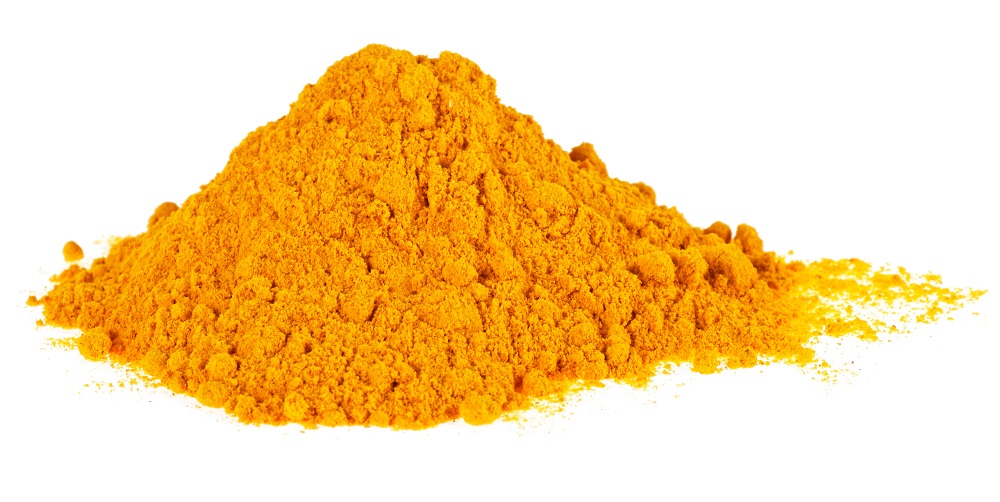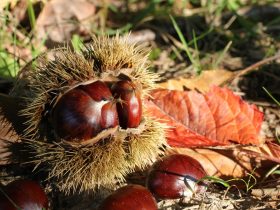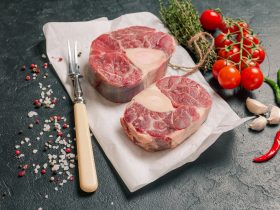Curry is a spiced and aromatic dish originating from the Indian subcontinent, oftentimes served alongside rice or other meat dishes as a complement. However, even in India itself, the exact ingredients and cooking methods can differ widely between each individual chef, depending on factors such as ethnic background or religious beliefs1.
While curry can trace its roots back to India and neighboring countries, it has spread across the world to become a varied dish consisting of many ingredients depending on the particular geographic origin.
Curry, while varied, is traditionally flavored with a large number of aromatic spices originating from the Eastern hemisphere. Curry’s taste is often described as earthy and mildly spicy with small hints of umami, depending on the sort of vegetables and meats that are added to it during cooking. Occasionally, curry may also be somewhat sweet, especially in the far south-east Asian versions of the recipe2.
What Gives Curry its Taste?
Curry’s most signature flavor, or at least the underbelly of taste that characterizes curry itself is the spice turmeric. Also known as curcumin, turmeric has a mildly spicy flavor underpinned with an earthiness and a strong body of bitter flavor. This bitterness is somewhat undercut when placed in warm temperatures, and is also well-masked by other spices that are often incorporated into the curry.

Apart from turmeric, most “wet” forms of curry will also utilize coconut milk, beef stock, or similar creamy liquids in order to give it much of its volume and allow the spices to distribute evenly throughout the dish.
Most often, these fluids contribute greatly to the regional taste differences between each individual recipe of curry, such as coconut milk lending a sweetness to south-east Asian curries.
What Does Curry Smell Like?
As curry is a highly aromatic dish- that is to say, curry has a very strong smell while being cooked- it is often that one would recognize its unmistakably unique scent, even hours after it has been cooked.
Spices such as turmeric, pepper and cumin often exude a powerful scent alone, of which becomes even more noticeable once they are placed in a warm and moist dish such as curry.
While individual differences in recipes may alter this smell somewhat, the smell of curry is often the same between different types of curries.
Other recipes that help characterize their unique smells are ones with the addition of chilis, peppers, cabbage or even chopped ginger.
What Vegetables Can Improve Curry’s Taste?
Though curry traditionally is served with carrots and chicken, owing to the global popularity of curry and the fact that not all traditional Indian ingredients are available throughout the world, many different cultures have instead elected to replace these unobtainable ingredients with local foods from their own countries.
In the famous Thailand-based curry, for example, the original vegetable substitutions call for produce such as ginger, lemon grass and even kale. While these are not the same ingredients used in traditional Indian curries, they certainly do improve the taste greatly.
Other vegetables often used in curry are both red and green bell peppers, of which add both a mild spice to the dish as well as an excellent improvement in texture.
Apart from bell peppers, such organic produce as chickpeas, broccoli, peas, cauliflower and even peanut butter is added. Though uncommon, many alternate and non-traditional curry recipes incorporate these ingredients in order to substitute for characteristics such as the richness of coconut milk or the aromatic sharpness of onions.
Of course, the primary and distinguishing characteristic of curry is always the spices that are added to its mixture, as these herbs and flavorings are what define the curry as a curry.
Does Curry Have Coconut Milk?
As previously mentioned, certain south-east Asian forms of curry incorporate coconut milk instead of broth or plain water. Whether this was due to an unavailability of broth in previous times or simply due to a sort of regional preference, coconut milk can certainly improve both the texture and taste of any curry it is added to.
As coconut milk has a rich and creamy texture that pairs well with the earthy flavors of curry, it is advisable to only a small amount of hot water before adding full-fat coconut milk, because coconut milk in its pure form acts as a thickener in most dishes, and as such may make the curry’s sauce too thick.
Flavor-wise, coconut milk both enhances the taste of your curry spices by allowing fat-soluble molecules present within the molecular matrix of the spices to break down. This enhances the flavor of the spices in a way other non-lipid-based fluids cannot.
Apart from improving the quality and taste of the curry spices, coconut milk itself lends a unique and slightly sweet flavor to curry that pairs extremely well with vegetables like carrots and onions.
What Spices Go into Curry Mix?
Usually, most mixes of curry spice contain ingredients such as the classic turmeric, coriander, cumin, powdered ginger root, chili, black or white pepper and occasionally cinnamon. The exact composition and portioning of these spice mixes depends on the particular brand and location that they are produced in.
Certain cheaper brands of curry mix will also add cornstarch or other filler material in order to cut costs and increase profit margins. While purchasing these mixes is cheaper, these particular curry products are not as fragrant as higher-quality curry mixes, and as such should be avoided if one wishes to improve their curry recipe.
Why is Curry Usually Yellow?
As one of the primary ingredients of curry is the ever-present turmeric spice, the majority of curry recipes end up a yellow or brownish-yellow color once cooked.
This is due to the presence of a compound called curcumin in turmeric, which is also traditionally used to dye clothes and other cloth products yellow in the subcontinent of India. While curry is unlikely to stain your containers or pans, it is best to store it in storage vessels that are not made of porous-plastic.
References
1. Raghavan, S. (2007). Handbook of Spices, Seasonings and Flavourings. CRC Press. p. 302. ISBN 978-0-8493-2842-8.
2. Van Esterik, Penny (2008). Food Culture in Southeast Asia. ABC-CLIO. pp. 58–59. ISBN 9780313344206.
3. “Thys fourme of cury ys compyled of þe mayster cokes of kyng Richard þe secund … by assent of Maysters of physik and of phylosophye”.–“Things sweet to taste: selections from the Forme of Cury”. 1996 ISBN 0-86373-134-1





Hi, I'm Dom
Dom Eats was started to help other people fall in love with food. While cooking can feel intimidating, it doesn't have to be.